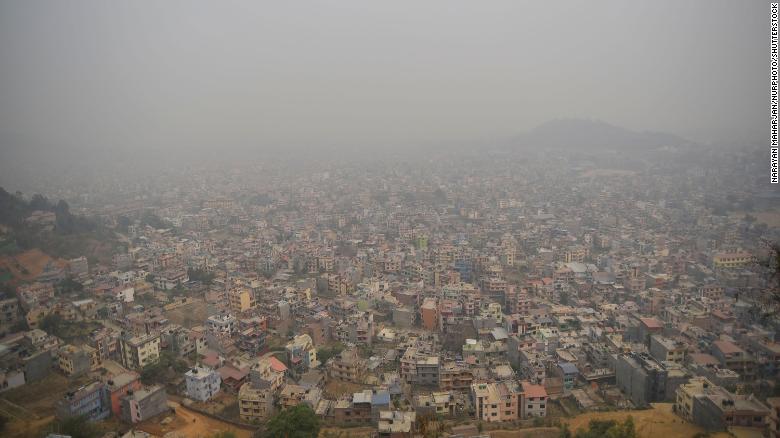Hundreds of wildfires are burning across Nepal, sending smoke and ash across its cities during one of the worst fire seasons in recent years.
Nepal’s dry season, which runs from late fall to early summer, typically peaks with the most severe fires in March and April. Since November, 73 of Nepal’s 77 districts have reported forest fires — the highest level on record in the past five fire seasons, according to CNN Weather.
The country has recorded up to 2,087 forest fires nationwide since November 15, 2020, according to the Nepalese Forest Fire Management. And as of March 25, there were still at least 524 active fires burning across the country, spreading a combination of dust, smoke and ash into the air.
Photos from the capital Kathmandu show streets blanketed in gray smog, the air thick and visibility poor. Images taken Sunday by the European Union’s Copernicus Sentinel-2 satellite show the valleys east of Kathmandu completely engulfed in smoke.
A satellite fire map by NASA shows fire hotspots dotted across the bottom of the Himalayas, with a few creeping up the mountains.
As the fires rage, the country’s air quality has deteriorated. On Tuesday afternoon, Kathmandu had a “very unhealthy” score of 225 on the World Air Quality Index, which measures the concentration of different pollutants in the air — the most important being PM 2.5. This harmful microscopic particulate matter is smaller than 2.5 micrometers in diameter, and is considered particularly dangerous as it can lodge deep into the lungs and pass into other organs and the bloodstream.
Kathmandu’s PM 2.5 levels reached a maximum of 363 micrograms per cubic meter on Tuesday. The World Health Organization considers anything above 25 to be unsafe.
The Ministry of Education, Science and Technology held an emergency meeting on Sunday, where authorities decided to close all schools until Friday due to the pollution and health risks, according to state-run news agency Radio Nepal.
The pollution from the smoke and ash has been exacerbated by a prolonged drought and a stagnant atmosphere, which means there’s nothing to blow or wash away the air pollutants, according to Radio Nepal, citing the country’s Department of Hydrology and Meteorology. The haze will remain for the next few days, the Department added, advising residents to stay indoors and wear a face mask.
But there is some hope in the immediate forecast. A weak system moving across the area will usher in about a 40% chance of wet weather on Wednesday and Thursday, according to CNN Weather.
Kathmandu averages around 34 millimeters of rainfall in the month of March, but has only recorded a little over 6 millimeters this month — so this will be the best chance for rainfall in nearly three weeks.
>>>>


